Embark on the journey of raising Polish chickens with our Ultimate Guide. Whether you’re a novice or an experienced poultry enthusiast, discover everything you need to know about Polish chicken care, from breed profiles and temperament to egg production and health issues. Explore various Polish chicken varieties, coop designs, and feeding requirements for successful farming.
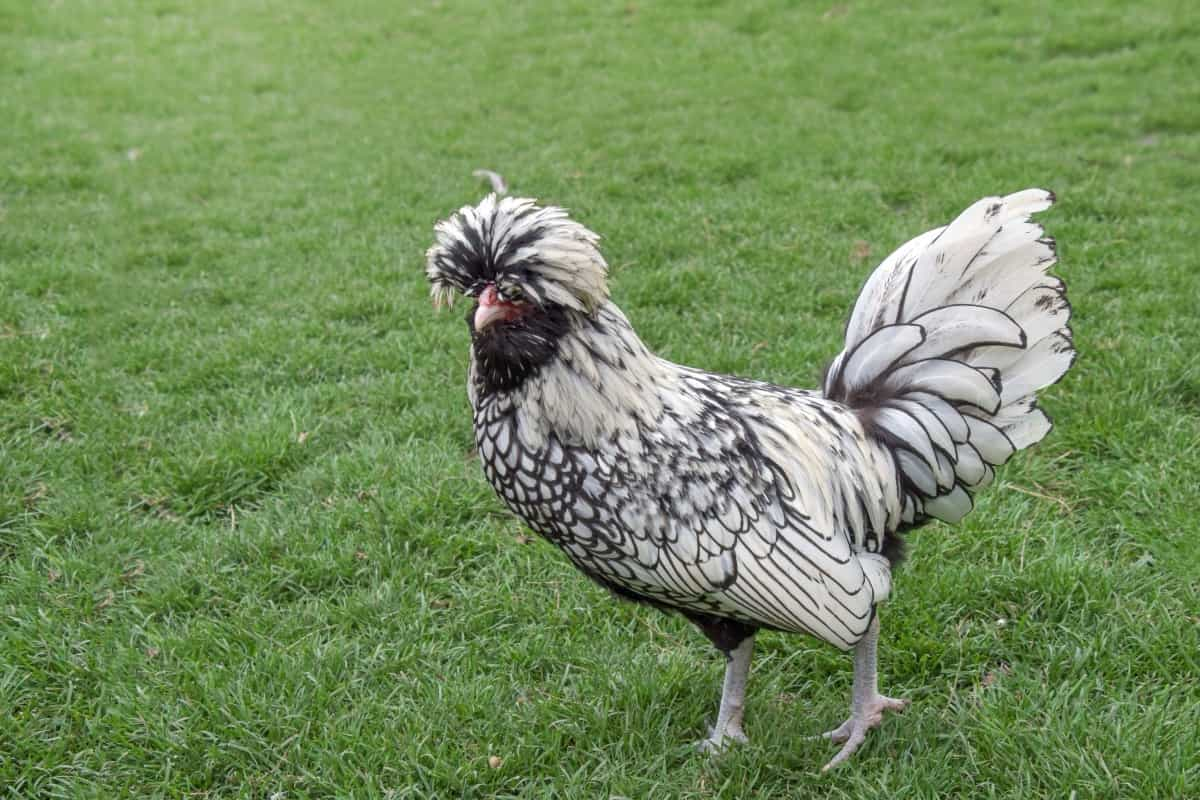
Introduction to Polish Chickens
Raising Polish chickens at home is a rewarding experience for poultry enthusiasts. These charming birds are known for their distinctive appearance and friendly demeanor, making them popular choices for backyard flocks. Whether you’re a novice or an experienced chicken keeper, Polish chickens can add beauty and personality to your flock.
History and Origin of the Breed
Polish chickens have a rich history dating back to the 16th century in Poland. Originally bred for their ornamental qualities, they were favored by European nobility for their extravagant plumage and unique crests. Over the centuries, Polish chickens have become beloved for their striking appearance and gentle disposition.
Distinctive Features and Appearance
Polish chickens are easily recognizable by their large crests of feathers atop their heads, known as “topknots” or “pom-poms.” They have clean, elegant bodies with long necks and tails, giving them a regal appearance. Their striking appearance makes them popular subjects for exhibitions and poultry shows.
Varieties and Recognized Colors
Polish chickens are available in white, black, buff, silver, and golden hues, among other colors and patterns. Each variety has its unique charm, with some featuring laced or spotted plumage. Breeders and enthusiasts often seek out rare color varieties to add diversity to their flocks.
Polish Chicken Price
The price of Polish chickens varies depending on factors such as age, quality, and color variety. On average, chicks can cost between $5 to $15 each, while mature birds may range from $20 to $50 or more. Polish chickens can vary in price depending on factors such as age, color, and quality.
Polish Chicken Lifespan
With proper care, Polish chickens can live up to 5-7 years on average. Providing a balanced diet, adequate shelter, and regular health checks can help extend their lifespan and ensure their well-being. Polish chickens have an average lifespan of 5-7 years, though some may live longer with proper care. Providing a suitable environment, a nutritious diet, and regular health checks are key to ensuring their longevity and quality of life.
Physical Characteristics of Polish Chicken
Polish chickens have a slender build with long, graceful necks and tails. Their most distinctive feature is their crest of feathers, which can vary in size and shape depending on the individual bird. Despite their elegant appearance, they are robust birds capable of foraging and roosting with ease.
In case you missed it: Ultimate Guide to Raising Australorp Chickens: Profile, Farming Economics, Egg Production, Diet, and Care
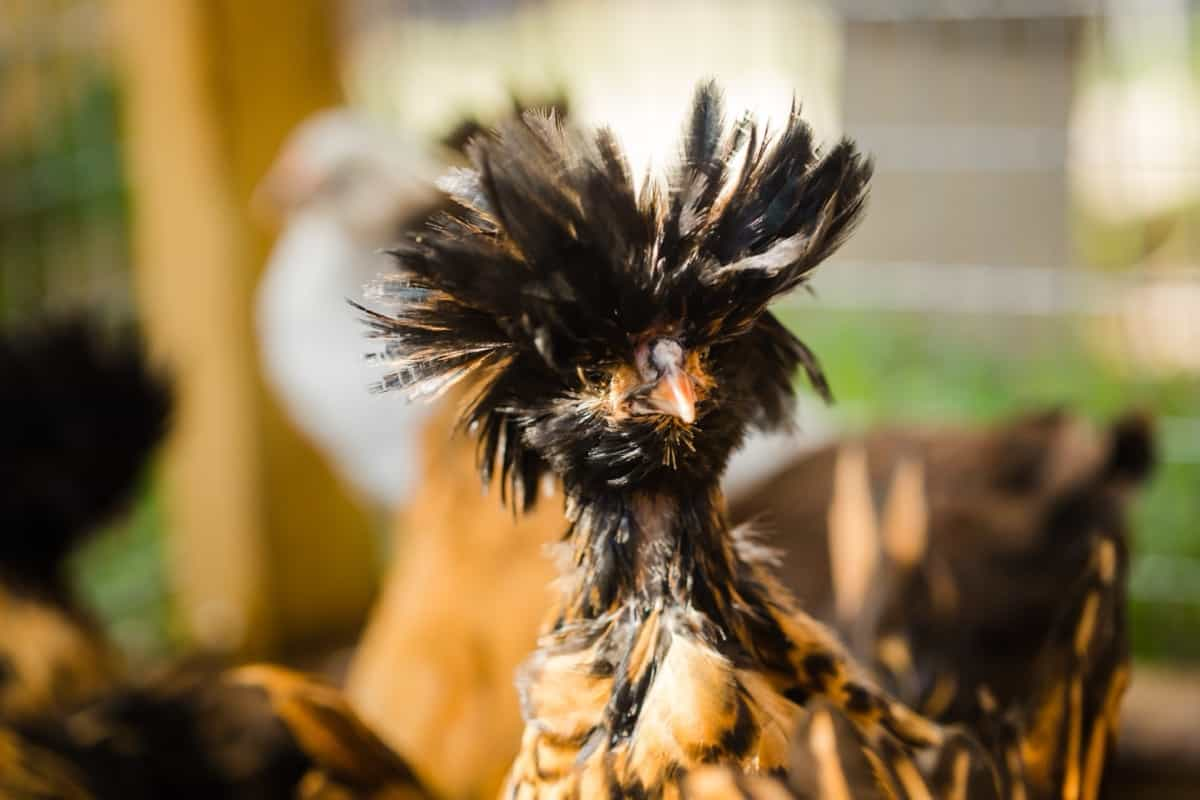
Size and Weight Standards
Adult Polish chickens typically weigh between 4 to 6 pounds, with hens being slightly smaller than roosters. Despite their lightweight build, they are hardy birds capable of withstanding various weather conditions. Their moderate size makes them suitable for both backyard and commercial production.
Feathering and Crest Details
The feathers of Polish chickens are smooth and glossy, with distinct patterns and coloration. Their crests, composed of tightly packed feathers, come in various shapes, including round, V-shaped, or even heart-shaped. Breeders often select for well-defined crests and vibrant plumage in breeding programs.
Beak, Eyes, and Comb
Polish chickens have small, curved beaks and bright, alert eyes. Their combs are typically small and neat, often overshadowed by their elaborate crests. Their small combs make them less susceptible to frostbite in cold climates, making them adaptable to various environments.
Behavior and Temperament of Polish Chicken
Polish chickens are very gentle and friendly, making them ideal additions to backyard flocks. They are curious birds that enjoy foraging and exploring their surroundings. Despite their regal appearance, they are not aggressive and get along well with other flock members.
Social Dynamics and Behavior
Polish chickens are social animals that thrive in small flocks. They form close bonds with their flock mates and often engage in communal activities such as dust bathing and roosting together. Their friendly nature makes it easy to integrate into existing flocks and enjoyable to observe.
Interaction with Humans and Pets
Polish chickens are affectionate birds that enjoy human interaction. They can be easily tamed and may even seek out attention from their caretakers. They also get along well with other pets, such as dogs and cats, making them versatile additions to households with multiple animals.
Noise Levels and Activity
Polish chickens are relatively quiet birds, with hens occasionally vocalizing when laying eggs or communicating with their flock mates. They are moderately active, spending their days foraging and exploring their environment. Their calm demeanor makes them suitable for urban and suburban settings where noise restrictions may apply.
Housing Polish Chickens
Providing adequate housing is essential for the health and well-being of Polish chickens. A well-designed coop with proper ventilation and predator-proofing ensures a safe and comfortable environment for these birds. Whether you’re building a coop from scratch or repurposing an existing structure, prioritize security and comfort for your flock.
Coop Design and Space Requirements
Polish chickens require a spacious coop with ample room to move around and stretch their wings. A minimum of 4 square feet of space per bird is recommended, with additional space for nesting boxes and perches. Providing adequate space prevents overcrowding and reduces the risk of aggressive behavior among flock members.
Ventilation and Temperature Control
Good ventilation is important for maintaining optimal air quality and temperature inside the coop. Adequate airflow helps prevent respiratory issues and regulates temperature fluctuations, ensuring the comfort of the chickens. Consider installing windows, vents, and fans to promote air circulation and regulate temperature year-round.
In case you missed it: Silkie Chicken Farming: Raising Practices, Varieties, Egg Production, Diet, and Care
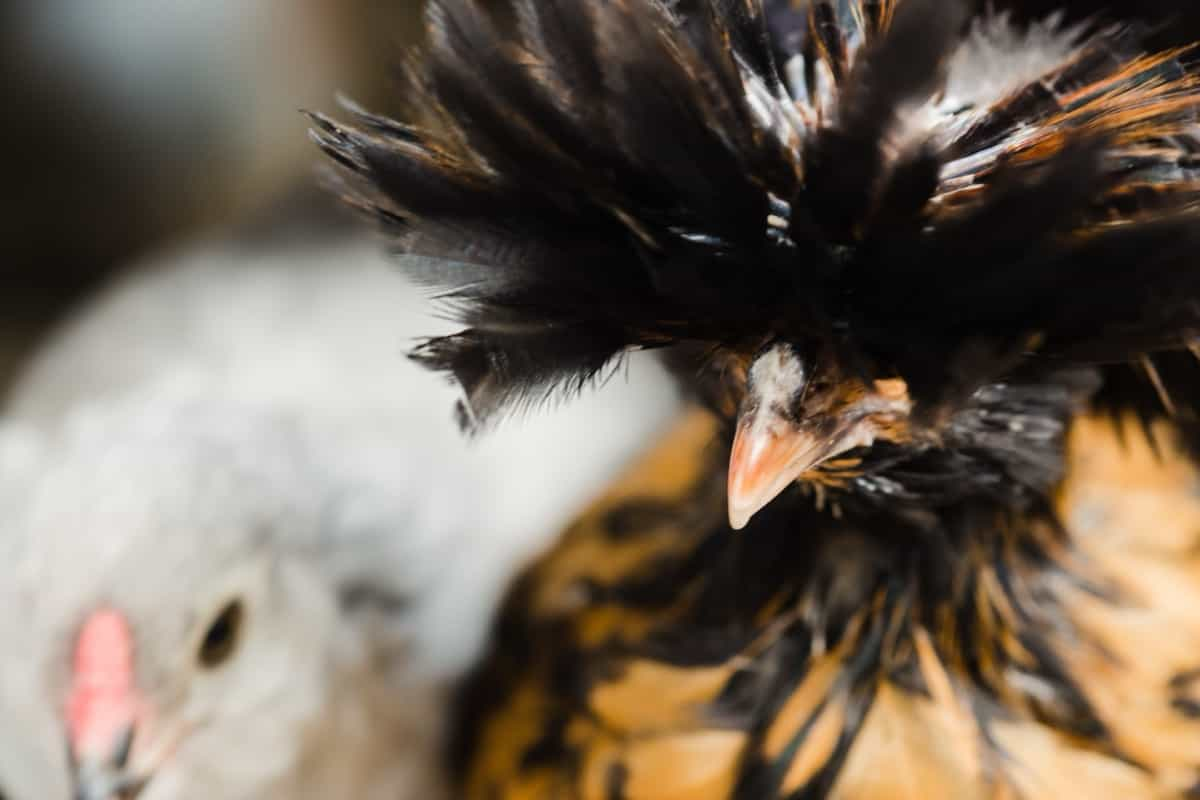
Safety from Predators
Protecting Polish chickens from predators is essential, especially for backyard flocks. Installing secure fencing, predator-proofing the coop, and using deterrents such as motion-activated lights can help deter potential threats. Regularly inspect your coop for weak spots and reinforce them to keep predators at bay.
Polish Chicken Feeding and Nutrition
Providing a balanced feed is key to keeping Polish chickens healthy and thriving. A combination of commercial poultry feed, fresh fruits and vegetables, and supplemental treats ensures they receive essential nutrients. Whether you’re feeding a small backyard flock or a larger commercial operation, prioritize quality nutrition for optimal health and productivity.
Basic Dietary Needs
Polish chickens require a diet rich in protein, vitamins, and minerals to support their growth and development. A high-quality layer feed with a protein content of 16-18% is suitable for adult birds, while chicks require a starter feed with higher protein levels. Additionally, providing access to grit and oyster shells ensures proper digestion and eggshell formation.
Supplements and Treats
In addition to commercial feed, Polish chickens can enjoy a variety of supplemental treats, including mealworms, fruits, vegetables, and grains. These treats provide enrichment and variety in their diet while offering additional nutrients. However, treats should be given in moderation to prevent nutritional imbalances and obesity.
Water Access and Management
Access to clean, fresh water is important for Polish chickens’ health and hydration. Providing multiple water sources and regularly cleaning and refilling waterers ensures they have access to clean water at all times. During hot weather, consider adding electrolytes to their water to prevent dehydration and heat stress.
Health, Wellness, and Care for Polish Chicken
Maintaining the health and well-being of Polish chickens requires regular care and attention. Monitoring signs of illness, providing proper nutrition, and implementing preventive measures are essential for keeping them happy and healthy. Whether you’re a novice or an experienced chicken keeper, staying proactive with your flock’s health ensures they lead long, fulfilling lives.
Common Health Issues and Prevention
Polish chickens are generally hardy birds but may be susceptible to common poultry health issues such as respiratory infections, parasites, and injuries. Regular health checks, proper hygiene, and biosecurity measures can help prevent illness and disease. Promptly address any health concerns to minimize the risk of spreading illness to the rest of the flock.
Vaccinations and Parasite Control
Vaccinating Polish chickens against common diseases such as Marek’s disease and Newcastle disease helps protect them from serious health threats. Additionally, regular parasite control measures, such as deworming and mite prevention, are essential for maintaining their well-being.
Emergency Care and Veterinary Assistance
In the event of diseases or injury, quick veterinary care is crucial for Polish chickens’ recovery. Having a basic first aid kit on hand and knowing how to administer basic treatments can help address minor issues while consulting a veterinarian ensures proper diagnosis and treatment for more serious conditions. Familiarize yourself with common poultry health concerns and establish a relationship with a poultry-friendly veterinarian to ensure your flock receives timely and appropriate care.
In case you missed it: Sussex Chicken Farming: Raising Practices, Varieties, Egg Production, Diet and Care
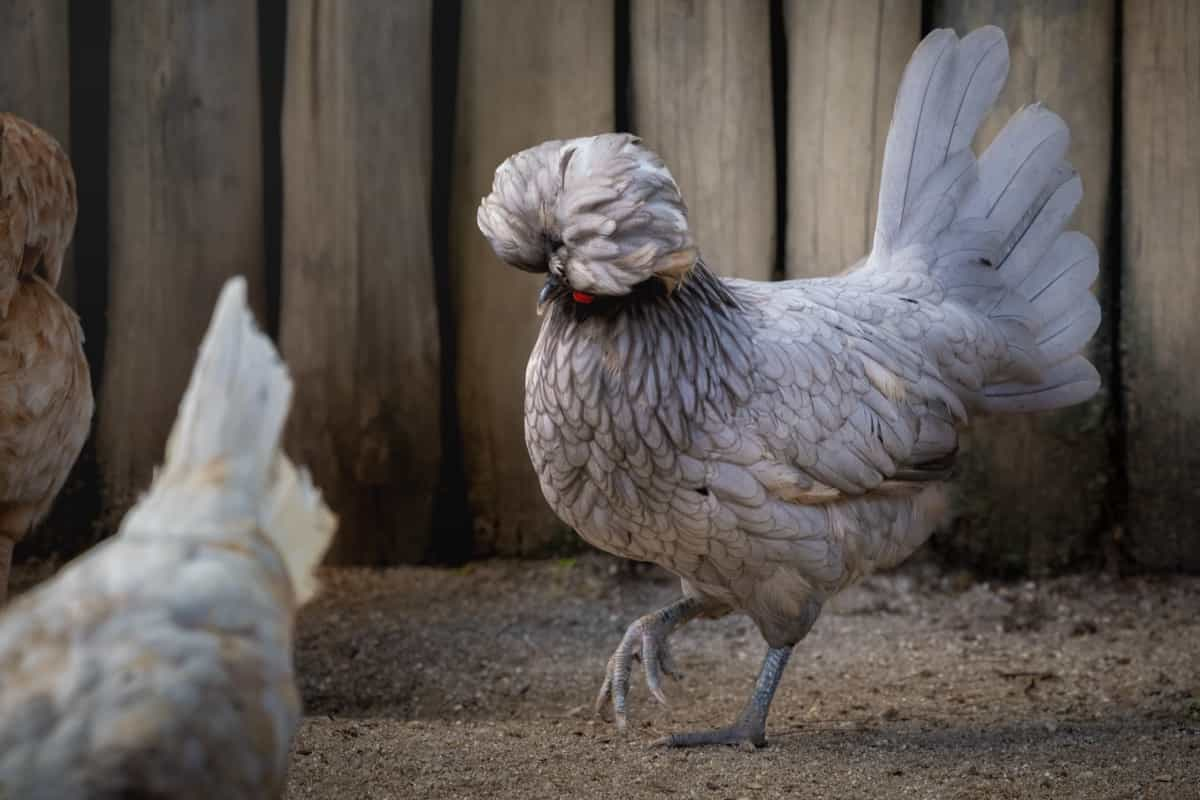
Polish Chicken Egg Production
Polish chickens are not the most prolific egg layers, typically producing around 150-200 medium-sized white eggs per year. However, their eggs are prized for their quality and taste, making them a favorite among backyard poultry enthusiasts.
Laying Frequency and Seasonality
Polish chickens exhibit seasonal laying patterns, with high production taking place in the spring and summer months. Laying frequency can vary depending on factors such as age, health, and environmental conditions. Providing adequate nutrition and proper care can help optimize egg production throughout the year.
Egg Size, Color, and Quality
Polish chicken eggs are typically medium-sized and white. While they may not lay as frequently as other breeds, Polish chickens are known for producing eggs with excellent quality and flavor. Proper diet and care contribute to the overall quality of the eggs.
Enhancing Egg Production
To enhance egg production in Polish chickens, ensure they have access to a balanced feed rich in protein and calcium. Supplementing their diet with treats such as mealworms and greens can also stimulate egg laying. Additionally, providing a stress-free environment and adequate nesting boxes encourages hens to lay regularly.
Breeding Polish Chickens
Breeding Polish chickens requires careful selection of breeding stock to maintain desired traits, such as crest size and color. Proper breeding techniques, including controlled mating and genetic diversity, help produce healthy and vigorous offspring.
Selecting Breeding Stock
When selecting breeding stock, choose birds with strong crests, good conformation, and vibrant plumage. Avoid birds with health issues or deformities, as these characteristics can be passed on to offspring. Look for reputable breeders or hatcheries that prioritize breeding for quality and breed standards.
Breeding Techniques and Tips
Successful breeding of Polish chickens involves techniques such as controlled mating, proper housing, and vigilant monitoring of breeding pairs. Avoid inbreeding by introducing new bloodlines periodically and maintaining detailed records of breeding activities.
Incubation and Chick Care
Incubating Polish chicken eggs requires maintaining optimal temperature and humidity levels throughout the incubation period. Once hatched, chicks should be kept warm and dry, with access to clean water and starter feed formulated specifically for chicks.
Showing Polish Chickens
Preparing Polish chickens for poultry shows involves grooming their feathers, cleaning their crests, and ensuring they meet breed standards for size, color, and conformation. Proper handling and training can help acclimate chickens to the show environment and minimize stress.
Preparation for Poultry Shows
Before a poultry show, Polish chickens should be bathed, dried, and groomed to enhance their appearance. Practice posing and handling the birds to ensure they are comfortable and cooperative during judging.
Show Standards and Expectations
Judges evaluate Polish chickens based on breed standards established by poultry organizations such as the American Poultry Association. Birds are assessed for traits such as crest size and shape, body conformation, and overall presentation.
Winning Tips and Strategies
To increase the chances of winning at poultry shows, focus on breeding and selecting birds that closely adhere to breed standards. Pay attention to grooming and presentation and seek feedback from experienced breeders and judges to continually improve.
In case you missed it: How to Raise Wyandotte Chickens: A Profitable Wyandotte Farming for Beginners
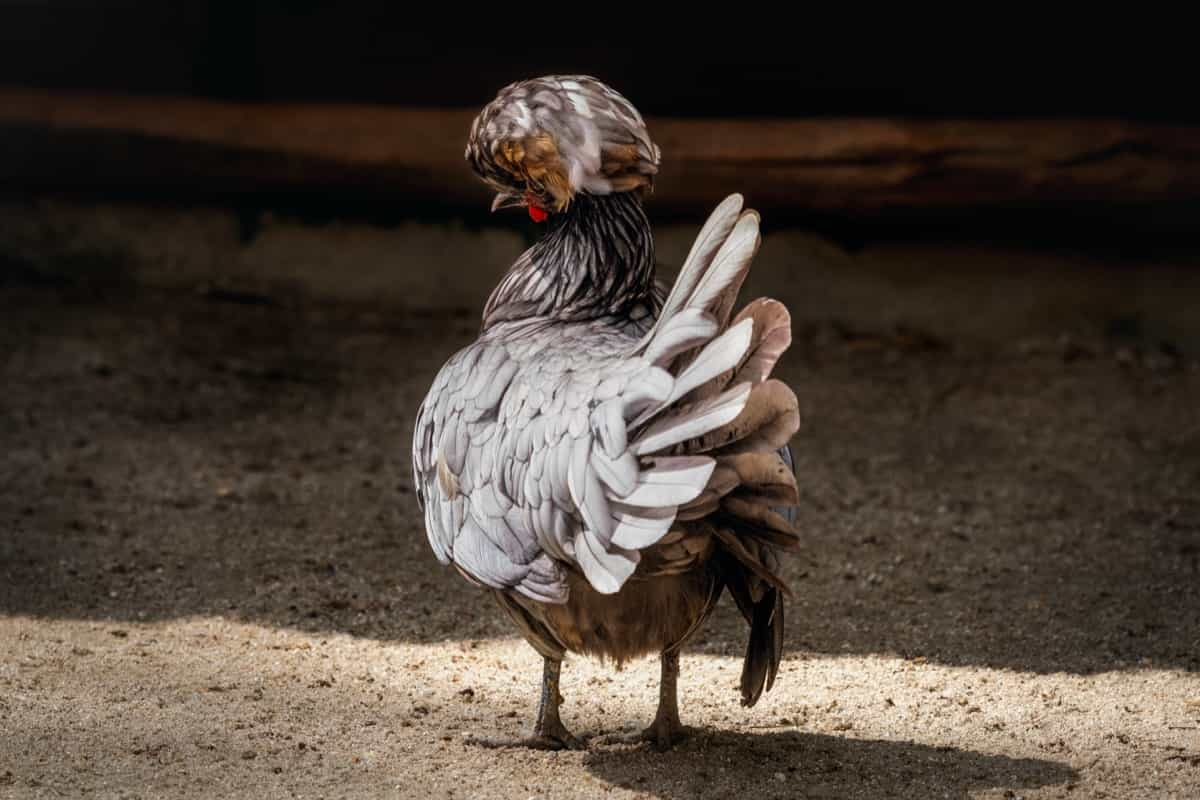
Polish Chicken Care in Different Climates
Polish chickens can adapt to a variety of climates, but proper care is essential to help them thrive. In cold conditions, provide adequate shelter, insulation, and supplemental heat as needed. In hot weather, ensure access to shade, ventilation, and plenty of fresh water.
Adapting to Cold Conditions
In cold climates, Polish chickens may require additional insulation and protection from harsh weather conditions. Provide draft-free housing with plenty of bedding, and consider using heat lamps or heated waterers to prevent frostbite and hypothermia.
Managing in Hot Weather
During hot weather, Polish chickens are susceptible to heat stress and dehydration. Provide ample shade, ventilation, and access to cool water to help them regulate their body temperature. Avoid overcrowding and handle birds gently to minimize stress.
Seasonal Care Adjustments
Adjust care routines seasonally to meet the changing needs of Polish chickens. Monitor temperature fluctuations, predator activity, and daylight hours to ensure chickens remain healthy and comfortable throughout the year.
Integrating Polish Chicken with Other Breeds
Integrating Polish chickens into mixed flocks requires careful consideration of flock dynamics and compatibility with other breeds. Introduce new birds gradually, monitor interactions closely, and provide adequate space and resources for all chickens.
Compatibility and Flock Dynamics
Polish chickens can coexist peacefully with other breeds in mixed flocks, but individual temperament and hierarchy dynamics may vary. Provide multiple feeding and watering spots to prevent competition and reduce aggression among flock members.
Managing Mixed Flocks
Managing mixed flocks involves balancing the needs and preferences of different chicken breeds. Provide adequate space, roosting areas, and nesting boxes to accommodate the diverse needs of Polish chickens and other breeds.
Avoiding Bullying and Crest Damage
To prevent bullying and crest damage in Polish chickens, monitor flock interactions and intervene if necessary. Provide hiding spots and escape routes for bullied birds and separate aggressive individuals if conflicts arise.
Polish Chicken Sustainable Practices
Raising Polish chickens using sustainable practices promotes environmental stewardship and self-sufficiency. Utilize chickens for insect control, composting with chicken manure, and rotational grazing to minimize environmental impact and maximize resource efficiency.
Using Chickens for Insect Control
Polish chickens are excellent foragers and can help control insect pests in the garden or on the farm. Allow chickens access to areas with high insect populations, such as compost piles or garden beds, to naturally reduce pest numbers.
Composting with Chicken Manure
Chicken manure is a rich and valuable source of nutrients for composting, enriching soil fertility, and promoting healthy plant growth. Combine chicken manure with carbon-rich materials such as straw or leaves to create nutrient-rich compost for garden use.
Raising Polish Chickens in the Backyard
Raising Polish chickens in the backyard is a rewarding experience that provides fresh eggs, pest control, and entertainment for the whole family. With proper care and management, Polish chickens can thrive in backyard settings and contribute to a sustainable lifestyle.
Economic Aspects of Raising Polish Chickens
Polish chickens offer potential income through sales of chicks, eggs, and show-quality birds. Understanding the costs involved and maximizing productivity is key to economic success.
Costs Involved in Rearing
Rearing Polish chickens involves initial costs for purchasing chicks of $3 each, housing, feed, and ongoing expenses for veterinary care and maintenance. Calculating these costs accurately helps in budgeting and financial planning.
Potential Income and Products
Polish chickens can generate income through the sale of chicks, hatching eggs, and show-quality birds. Additionally, their eggs are sought after for their unique appearance and nutritional value, offering additional revenue streams.
Economic Tips for Small-Scale and Hobbyist Keepers
Small-scale and hobbyist keepers can optimize their finances by focusing on niche markets, such as rare color varieties or specialty eggs. Collaborating with local breeders and attending poultry shows can also boost income.
In case you missed it: Ultimate Guide to Raising Leghorn Chickens: Feeding, Breeding, Egg Production, and Care
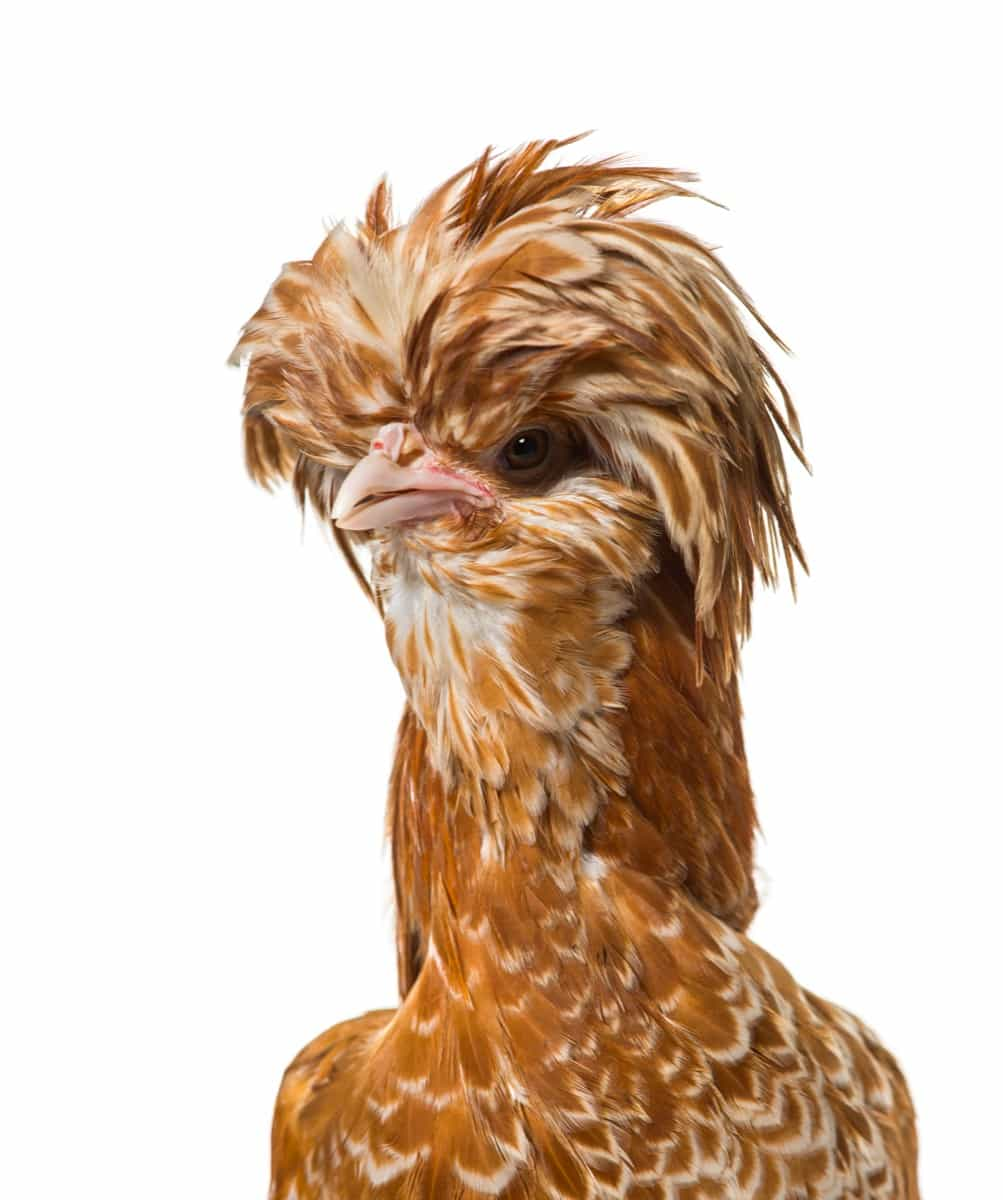
Ethical and Welfare Considerations
Ensuring the welfare of Polish chickens is essential for ethical breeding practices. Providing proper living conditions, nutrition, and veterinary care promotes their health and well-being.
Ensuring Proper Living Conditions
Polish chickens require adequate space, shelter, and protection from predators to thrive. Providing a clean and well-ventilated coop, along with access to fresh water and balanced nutrition, is crucial for their welfare.
Ethical Breeding Practices
Ethical breeding practices prioritize the health, temperament, and genetic diversity of Polish chickens. Responsible breeders focus on improving breed standards while avoiding detrimental traits.
Welfare Standards and Guidelines
Adhering to welfare standards and guidelines set by reputable poultry organizations ensures the humane treatment of Polish chickens. Regular health checks, vaccination programs, and proper handling contribute to their welfare.
Community and Support for Polish Chicken
Joining breed clubs, associations, and online forums provides valuable support and resources for Polish chicken enthusiasts. Networking with fellow breeders and sharing knowledge fosters a sense of community and camaraderie.
Joining Breed Clubs and Associations
Breed clubs and associations offer opportunities for education, networking, and collaboration among Polish chicken breeders. Membership provides access to breed standards, shows, and breeding programs.
Online Forums and Social Media Groups
Online forums and social media groups facilitate communication and information exchange among Polish chicken enthusiasts worldwide. Participating in discussions, sharing experiences, and seeking advice contribute to collective learning and support.
Workshops, Seminars, and Educational Resources
Attending workshops, seminars, and educational resources on poultry farming and breed-specific topics enhances knowledge and skills in raising Polish chickens. Learning from experienced breeders and industry experts improves breeding practices and productivity.
Conclusion
Raising Polish chickens offers a rewarding experience for poultry enthusiasts. By understanding Polish chicken care, including diet, housing, and health maintenance, breeders can ensure the well-being and productivity of their flock. Whether you’re interested in Polish bantam chickens or crested Polish varieties, this comprehensive guide equips you with the knowledge to raise and enjoy these unique birds.
- Types of Pesticides Used in Agriculture: A Beginner’s Guide
- Economical Aquaculture: A Guide to Low-Budget Fish Farming
- 15 Common Planting Errors That Can Doom Your Fruit Trees
- How to Make Houseplants Bushy: Effective Tips and Ideas
- Innovative Strategies for Boosting Coconut Pollination and Yield
- Pollination Strategies for Maximum Pumpkin Yield
- The Complete Guide to Chicken Fattening: Strategies for Maximum Growth
- Natural Solutions for Tulip Problems: 100% Effective Remedies for Leaf and Bulb-Related Issues
- Revolutionizing Citrus Preservation: Towards a Healthier, Greener Future
- Natural Solutions for Peony Leaf and Flower Problems: 100% Effective Remedies
- Maximizing Profits with Avocado Contract Farming in India: A Comprehensive Guide
- Natural Solutions for Hydrangea Problems: 100% Effective Remedies for Leaf and Flowers
- The Ultimate Guide to Choosing the Perfect Foliage Friend: Bringing Life Indoors
- From Sunlight to Sustainability: 15 Ways to Use Solar Technology in Agriculture
- The Ultimate Guide to Dong Tao Chicken: Exploring from History to Raising
- The Eco-Friendly Makeover: How to Convert Your Unused Swimming Pool into a Fish Pond
- Mastering the Art of Delaware Chicken Farming: Essentials for Healthy Backyard Flocks
- 20 Best Homemade Fertilizers for Money Plant: DIY Recipes and Application Methods
- How to Craft a Comprehensive Free-Range Chicken Farming Business Plan
- Brighten Your Flock: Raising Easter Egger Chickens for Beauty and Bounty
- How to Optimize Your Poultry Egg Farm Business Plan with These Strategies
- Subsidy for Spirulina Cultivation: How Indian Government Schemes Encouraging Spirulina Farmers
- Ultimate Guide to Raising Dominique Chickens: Breeding, Feeding, Egg-Production, and Care
- Mastering the Art of Raising Jersey Giant Chickens: Care, Feeding, and More
- Ultimate Guide to Raising Legbar Chickens: Breeding, Farming Practices, Diet, Egg-Production
- How to Raise Welsummer Chickens: A Comprehensive Guide for Beginners
- How to Protect Indoor Plants in Winter: A Comprehensive Guide
- Ultimate Guide to Grow Bag Gardening: Tips, Tricks, and Planting Ideas for Urban Gardeners
- Guide to Lotus Cultivation: How to Propagate, Plant, Grow, Care, Cost, and Profit
- Agriculture Drone Subsidy Scheme: Government Kisan Subsidy, License, and How to Apply Online
- Ultimate Guide to Raising Araucana Chickens: Breed Profile, Farming Economics, Diet, and Care
- Bringing Hydroponics to Classroom: Importance, Benefits of Learning for School Students
- Ultimate Guide to Raising Polish Chickens: Breed Profile, Farming Economics, Diet, and Care
- Ultimate Guide to Raising Australorp Chickens: Profile, Farming Economics, Egg Production, Diet, and Care
- Silkie Chicken Farming: Raising Practices, Varieties, Egg Production, Diet, and Care
- Sussex Chicken Farming: Raising Practices, Varieties, Egg Production, Diet and Care